For decades I’ve been aware of the work of Keith Grant (born 1930), but it is only in recent years that I have come to know it at all well. During that time both the style and the subject of his paintings have undergone a series of remarkable revolutions, as he determined not to rest on his laurels, but to explore the fundamentals of his approach and interests. You don’t often see an artist doing this, particularly one over the age of 80, when an ‘everything goes’ Old Age Style is a more common development. Through his radical questioning of precepts, Grant has pioneered what might be called (somewhat paradoxically) a Young Age Style, in which he returns to the basics of his first love — landscape painting — and reinvestigates its appeal, while at the same time exploring the eternal verities of paint: texture, line, colour, the vocabulary of gesture and impasto. There is something ineffably compelling about this new work of Grant’s: it has the unquenchable energy and optimism of youth, tempered by the wisdom of long experience. It’s a heady combination.
A selection of Grant’s latest work, together with one or two earlier pictures, is the centrepiece of the Summer Show at Chris Beetles. Beetles is renowned for his championing of art that is realistic and often highly illustrative, but he also has a taste for the painterly approach — witness his enthusiasm for the work of Peter Coker (1926–2004), former Kitchen Sink realist, and for the lyrical and metaphysical investigations of Keith Grant. Thus Beetles’ latest summer exhibition presents a range of varied and sometimes little known talent, from Edward Steel Harper to Edmund Blampied and William Walcot, but I have to say that for me Grant completely steals the show.
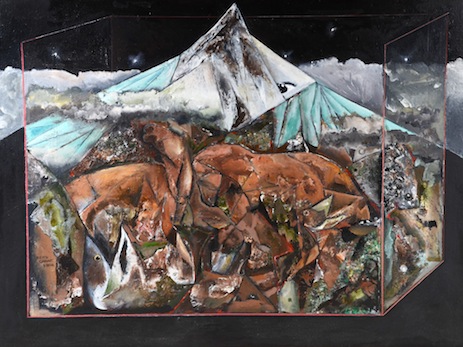
Some people acquainted with Grant’s work have observed that he seems to be revisiting his work of the 1960s, but such resemblance is, I believe, only superficial. The new work approaches the subject of landscape through the fractured perspectives of Modernism, reasserting Grant’s commitment to the North (he lives in Norway), while making a statement that is equally relevant to lovers of the English pastoral tradition. Although he can paint the star-studded tapestry of the northern night sky better than anyone — as his recent ‘Arcticum Stellis’ canvas effortlessly demonstrates — his principal interest at the moment is a grander and less specific commentary on nature. Grant paints the denizens of the ocean and forest, interspliced with the elements they inhabit, in a kaleidoscopic flow of imagery that chops up and recombines with robust poetic licence.
Robins and wrens, seabirds, fish, leaves, berries, eggs and nests, clouds and moons, insects and fungi come together in new and surprising juxtapositions. Pattern is a key determinant in these potent compositions (structures that are inherently musical and enhancing), and the stuff of paint is playing an increasingly important role in suggesting how the imagery might develop. Among my favourite paintings here are ‘Rock Horses’ (in which rock forms seem to be horses emerging from the very earth, though trapped inside a Baconian space frame; note the heavier paint facture), and ‘Return’, a homage to the British countryside. In this marvellous outpouring of energy and invention, Keith Grant is excelling himself. I can’t wait to see what he does next.
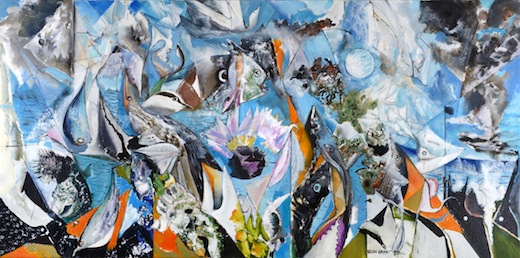
I came to the work of Edward Seago (1910–74) as a teenager through the evocative books he wrote and illustrated, such as A Canvas to Cover and Tideline. In those days I admired his work unreservedly, but now I derive much less satisfaction from his dexterous but often rather slick use of paint. The active brushwork of his oils is frequently used to disguise a superficiality of vision, the buildings and trees of his compositions being mere patches of dark or colour rather than real things. Seago’s main interest was in texture and surface, and he clearly enjoyed laying out the paint, but without point and pith the oil or watercolour is not transformed into more than an accumulation of clever marks. And yet there were lovely and diverting pictures in both recent shows devoted to his loose impressionism, at Portland Gallery (8 Bennet Street, SW1, until 9 July), and Richard Green (147 New Bond Street, W1, just over). The old mood music still exerts its pull, and clearly it is Seago season: a new monograph on him by James Russell (Lund Humphries, £40), who made such a success of the Ravilious picture books recently, adds a certain intellectual heft to the subject, but people will continue to go to Seago for simple visual pleasure. And where’s the harm in that?
Out of town, veteran Welsh landscape painter Glyn Morgan (born 1926) is showing recent work at Chappel Galleries (15 Colchester Road, Chappel, Essex, CO6 2DE, until 13 July). A pupil of that great original, Cedric Morris, Morgan makes oils and collages of dreaming hilltops in a Paul Nash vein, with mushrooms instead of sunflowers, and perhaps a white bird flying overhead, or a green moth sucking nectar. Magic mushrooms? Romantic ones, certainly, and they’re not an everyday occurrence. The drama is in the feathery paint handling and the soft contusions of colour. Morgan belongs to the visionary tradition of British landscape painting, taking his place with Samuel Palmer, Nash and Graham Sutherland. His rhapsodic songs of the earth deserve more attention than they’ve had in recent years, though David Buckman’s 2006 monograph on the artist has done something to redress the balance.
Finally: very last chance to see a charming exhibition of small paintings, drawings and prints by Robert Medley (1905–94), one of those reticent Englishmen whose manifest artistic achievements are in danger of being unfairly overlooked. He is perhaps better remembered as the catalyst who started W.H. Auden writing poetry or as co-founder of the Group Theatre, but he was a painter and teacher of great distinction, whose star pupils include John Berger, Maggi Hambling and Derek Jarman. Rooted in drawing from the figure, his style moved from an early realism through periods of powerful abstraction (which itself varied from organic to hard-edged) to a final loose figuration that distilled the fruits of nearly a century of looking.
The exhibition at the Art Stable (Child Okeford, Blandford, Dorset, DT11 8HB, until 28 June, check for opening hours) features some of the beguiling illustrations Medley made for Milton’s ‘Samson Agonistes’, which were inspired by Matisse’s cut-outs, but are much more affordable. Recommended.
Got something to add? Join the discussion and comment below.
Get 10 issues for just $10
Subscribe to The Spectator Australia today for the next 10 magazine issues, plus full online access, for just $10.
You might disagree with half of it, but you’ll enjoy reading all of it. Try your first month for free, then just $2 a week for the remainder of your first year.

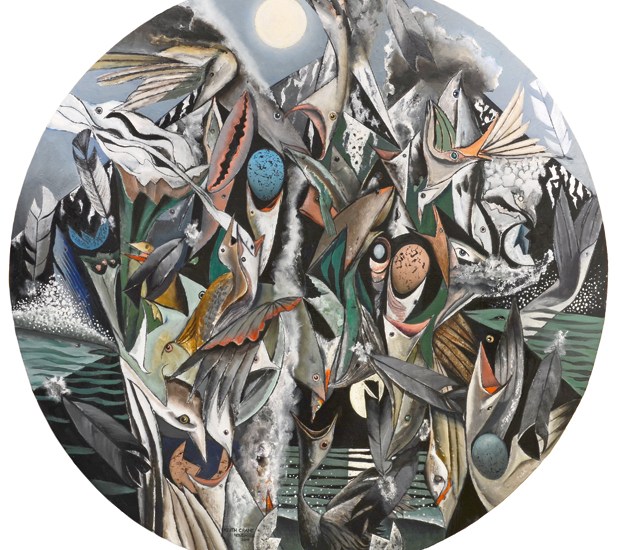



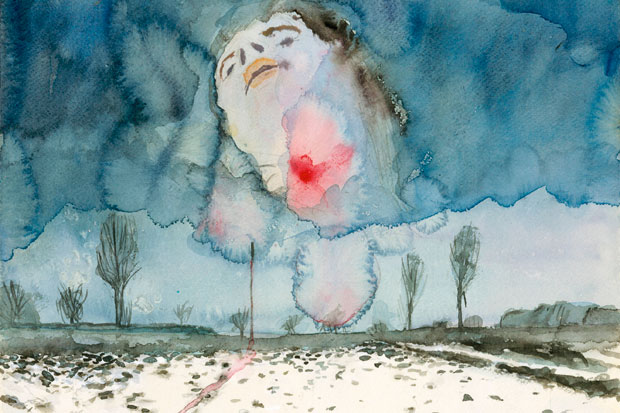

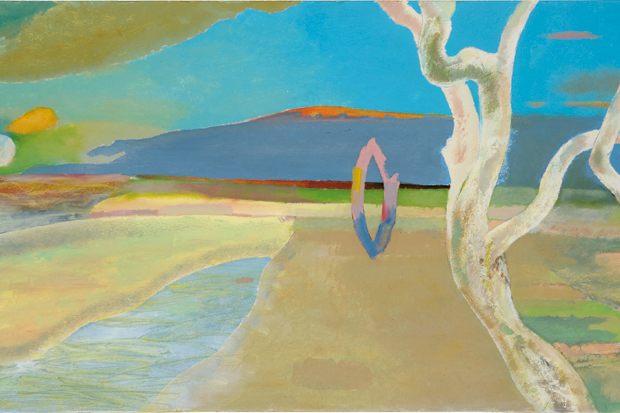






Comments
Don't miss out
Join the conversation with other Spectator Australia readers. Subscribe to leave a comment.
SUBSCRIBEAlready a subscriber? Log in